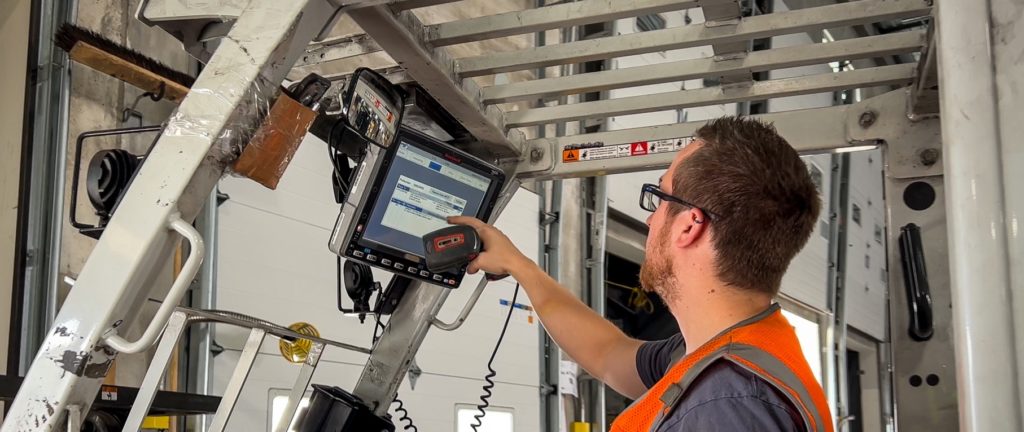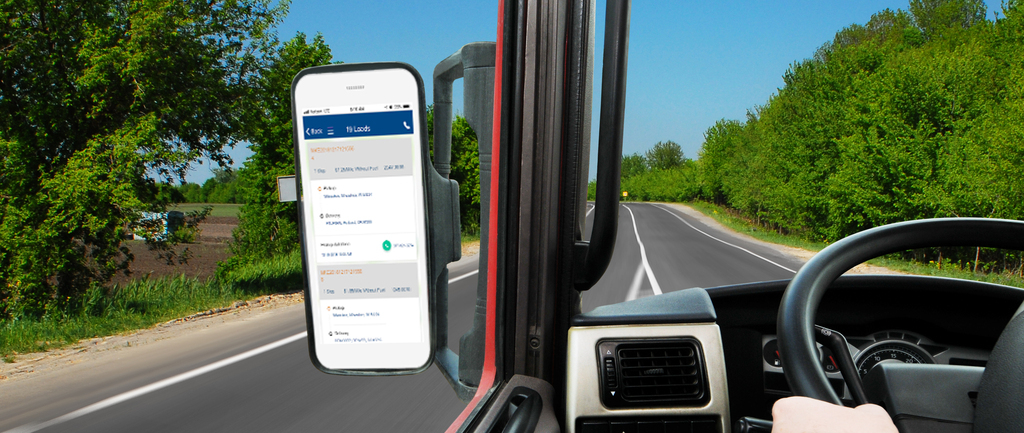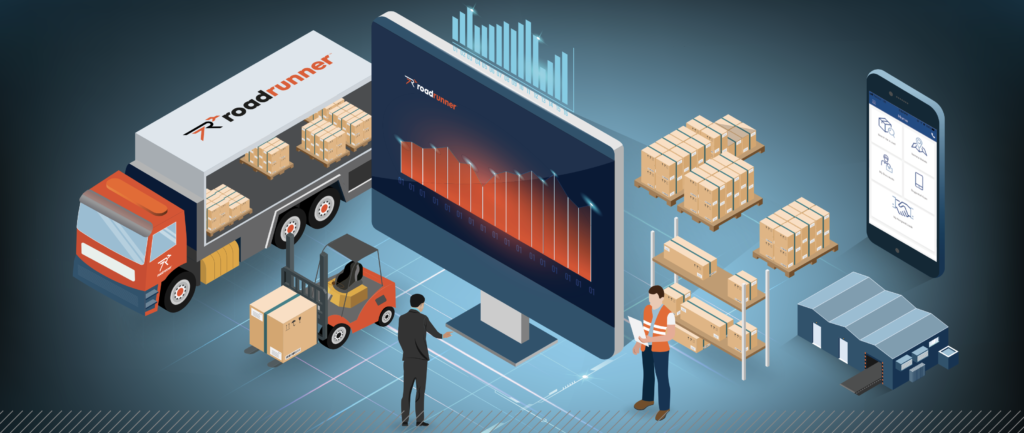Opportunity Knocks: A Big Investment in Technology Is on Deck for the Logistics Industry
Historically, the logistics industry has not been known as a first mover in the deployment of technology, even though the industry has a large volume of mature and diversified data sources at its disposal. While the fundamentals are there to support more integration of disparate data sources, there needs to be high- tech investment to make it happen. As a result, there are inefficiencies and missed opportunities
all along the supply chain. Lately, more companies have taken notice, and the race for major technological advancement in the industry has begun.
The back offices of many legacy logistics companies are currently going through significant transformations. Old, labor-intensive paper systems are being replaced with dynamic and flexible technology platforms, applications, and devices. As companies implement new technologies and integrate their systems across data sources, they are finding that errors decrease, operational efficiencies increase through shipments loading and unloading faster, freight transports more efficiently, and drivers get paid in close to real time.
As new technology platforms are being launched, they also are facilitating increased visibility for users in two key ways; first, more data is available for users to review, analyze, and react to; and second, more people have access to the data in real time. Data democratization is vital for success in today’s transportation industry. In turn, the entire decision-making apparatus is improved tremendously because the data collected is timely and robust, and the technology is capable of handling the end-to-end complexity of it all. Those changes come at a price; organizations today can be buried under too much data, and if not properly managed, a vast amount of information can create operational inefficiencies by creating confusion and information overload. Data governance and empowerment of the analytics team is key to success. In today’s industry, the analytics team must be independent and report directly to the C-Level sponsor in order to be fully empowered and identify organizational inefficiencies at any level.

Why Now? What Is Fast-Tracking Investment in Technology?
This tipping point for the logistics industry has been a long time coming. While there has been consensus for some time that the industry is ripe for significant investment in technology, there is no question that the pace of investment has been accelerated largely by impacts of the pandemic. Customers have shifted their thinking and expectations since COVID-19 arrived. More buyers than ever before have come to realize and leverage the fact that they can now order almost anything from the comfort of their homes, and in many cases expect to receive it overnight or even later the same day. This reflects an extraordinary shift in a very brief period of time. According to a 2021 Allied Market Research report, the same-day delivery market was valued at $5.78 billion in 2019 and is estimated to reach $20.36 billion by 2027. Needless to say, the pressure is on across the logistics industry to improve performance.
Advancements in robotics and artificial intelligence abound. Companies like Amazon, Uber, P44, FourKites, and Emerge are steering innovation and deploying new technologies rapidly, forcing others to catch up or lose out on business. Autonomous trucking, for example, is close at hand. The majority of goods transported in the US is done via trucks, and drivers’ time at the wheel is, of course, regulated for safety. Autonomous driving has the potential to change the landscape dramatically. As part of this innovation, we are now seeing, and expect to see even more automation across loading and unloading points along the supply chain. This is something we are committed to and investing in, as every node along the supply chain needs to become even more efficient to meet our customers’ needs and expectations.
Efficiency through data for faster shipments
- EDI/API tenders and machine learning enable future forecasting, proactive planning, and dispatching
- P&D optimization maximizes pickups, optimizes routes, and improves arrival times
- Dock automation optimizes door assignments, boosts efficiency in cross-dock operations, and minimizes dock time
- Optimization algorithms allow for fast and secure freight loading
- Real-time time freight visibility via GPS from multiple data sources enables optimization of inbound planning and future scheduling
- Algorithm enabled delivery of outbound freight promotes faster unloading and minimizes rehandling
Another factor driving technological investment is that there are leap-frog type opportunities in logistics. Few would argue that freight pricing can be complex. There are multiple classes for freight, numerous shipment variables, spot pricing, and the system for negotiating can be highly laborious. The deployment of a new, standardized technology platform could deliver a far more dynamic system that allows for changing circumstances, surge pricing, and negotiating all in real-time. Tackling the pricing system with new technology will require industry-wide involvement, agreement, and commitment, as well as significant investment in a standardized system.
Best Practices: Integrate, Automate, Customize, Standardize
Logistics is noteworthy for its disparate and diverse data streams. Because there are so many sources and types of data, creating a simple workflow with advanced reporting features and integrated tools is not a straightforward task. Four common pillars in the successful deployment of new technology platforms are integration, automation, customization, and standardization. These are the basic building blocks of a comprehensive, flexible, and dynamic information management system that delivers on the promise of increased efficiency and bottom-line results.
Within Roadrunner, we made the critical business decision to treat the development of our next-generation logistics technology as a start-up enterprise. We recruited from outside the logistics industry, and we launched an incubator to support the development and deployment of a state-of-the-art technology platform.
Technology only works if the process that it is trying to automate is standardized and optimized. Which is why at Roadrunner, we have created our “Band of Engineers” team that is integrated into each critical business function running from operations, maintenance, linehaul, pricing, and technology and fully empowered to make the most critical strategic decisions and process changes. The transportation industry suffers from legacy knowledge and unquestioned practices – “we have done it for 30 years” is often used as a statement to emphasize the status quo. At roadrunner, we have entirely pivoted from this point of operations by enabling our engineering team to advise our executives to make entirely data-driven decisions – following our motto, “In data we trust.” We are building a culture of experimentation and continuous improvement, enabling Roadrunner to become the LTL standard everybody in the industry will follow.

For us at Roadrunner, this enabled the development of a new digital platform and product suite, which focuses on simplifying the user experience and providing real-time visibility to diverse users across the logistics information management life cycle. It is the result of extensive research, involving critical input from our customers, who were keen to participate given the prospect of further bolstering connectivity and driving an ever- greater level of efficiency throughout their entire supply chains.
From the very start, our goal with this effort was to create a user experience based on simplicity and seamless integration. With that in mind, the algorithms within the system are designed to drive continuous process improvement. The platform has customizable dashboards and data visualizations, live tracking, integrated communication tools, document management, shipment bookmarking, spending tracking, and TMS integration. Because our customers stressed the importance of being able to switch back and forth among related technologies without leaving the interface, the Roadrunner team built in the flexibility to access other software programs allowing shipping and tracking without exiting or even having to view a new screen. As a result, the system that we have built enables members of our team from the back office to the loading dock, to those literally sitting in the driver’s seat to benefit from access to accurate, timely, and streamlined information on their own terms and in a manner that supports our mission of delivering for our customers.
From our standpoint, we have just begun. As is the case across the industry, Roadrunner’s technology is in the early stages of delivering its ultimate potential. Accordingly, our platform’s functionality is constantly being scrutinized and assessed with new features tested, reviewed, and voted on by our customers. By design, this client-driven improvement process empowers our diverse user groups to determine which new features and functions will receive the highest priority.
How is this accomplished? We do it by leveraging a proprietary technology stack that enables us to quickly enhance the platform by adding functionalities as they are requested by users. Plasticity is built into the system to allow customization without making users do workarounds or having to receive information they did not want or request. While baseline features and functions are standardized for consistency and accuracy, the system is noteworthy in that it uses event-based architecture as opposed to a relational database. This event-based functionality is flexible, with the potential to scale up or down with the size and breadth of each customer.
As referenced earlier, the logistics industry is moving at breakneck speed in large part based upon shifts that have occurred since the onset of the pandemic. Our belief is that there is no slowdown in sight. As a result, the Roadrunner technology team is already looking beyond features and functionality to the next generation platform we will bring to the market. We want to put innovative technology into the hands of the people who need it, whatever role they play, to further evolve the quality of our business deliverables, our customers’ experience, and contribute to the meaningful ongoing transformation of the logistics industry overall.

Roadrunner Spotlight: A Mobile App that Drives Results
Roadrunner, a provider of less-than-truckload (LTL) freight services in major metropolitan areas across
the US, created a customized mobile app for its drivers called Haul Now. It is an internally developed proprietary business intelligence tool that tracks all facets of a shipment, from quoting to invoicing to transit times and locations.
The app includes a real-time view of available loads that allows for proactive booking, providing drivers with flexibility in the loads they choose, as well as real-time communication with dispatchers. As business owners, this allows them to maximize the value of their business. The app also enables drivers to view documents, access historical dispatch and settlement information, and obtain directions to service centers. The app also has a newly developed tool that provides a familiar “rideshare-like” functionality for owner operators.
Building transparency into the information technology system was crucial. The more information drivers have, the better decisions they can make to run their business more efficiently. The more the operations staff knows, the better they can plan, dispatch, and manage loads, and the stronger each business is overall.
The Haul Now app utilizes the latest technology advancements in app development and was designed working closely with drivers as well as UX/UI experts to further Roadrunner’s goal of empowering